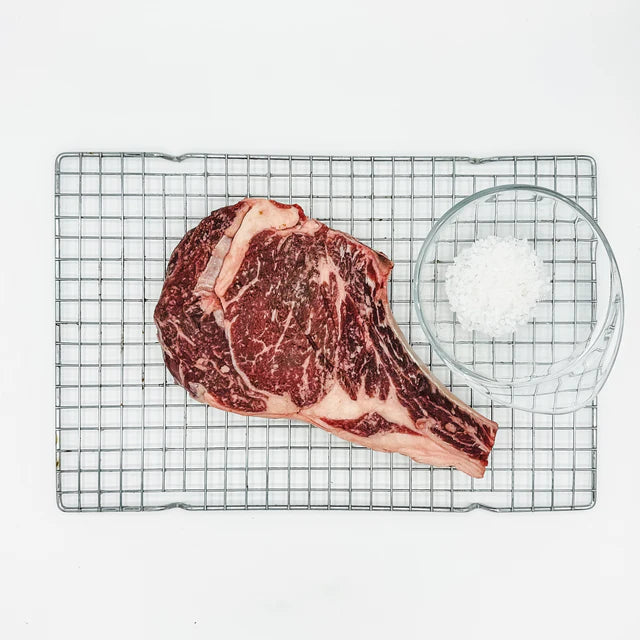
Beef Up Your Knowledge on Dry-Aged Beef
If you’re a steak lover, then you may have heard of dry-aged beef. But do you know what makes it so special? Or how it's different?
Until about 10 years ago I hadn't really heard much about it, but truth is, dry-aging meats has been around for centuries! When we started eating this type of beef I knew we were going to have to start a new farm project. We couldn't find what we were looking for.
Dry aging beef has the power to transform ordinary cuts of meat into something truly extraordinary. Let's talk about why dry-aged beef is worth the extra effort, time and expense—and in some of my other posts how it can add new dimensions of flavor to your favorite meals.
DRY-AGED BEEF
Dry Aged Beef is a tradition that's gotten a little lost over time - phased out for speed and efficiency. Benefits from dry aging are additional beef tenderness and a concentrated flavor that you can compare to a premier steak house.
At Creamery Creek, we choose to dry-age our whole carcass beef. Beef sides are hung on the rail at a USDA inspected facility in a temperature and humidity controlled hanging cooler for at least 21 days, some even longer at 28 days. We know this process concentrates the beef flavor and adds extra tenderness to an already high quality side of beef.
The dry aging process requires more time, effort, expertise, and expense. But it's the type of beef we love and appreciate and know you will too!
WET AGED BEEF
Wet-aged beef is packaged in large cuts right after a rigor mortis lets up - and placed into packaging so it doesn't lose any volume during transit.
When wet-aged beef gets to its destination - it's portioned up into steaks and roasts for the consumer's end use. There's the most amount of benefit to the packer and retailer in this scenario. Not the farmer, nor the consumer.
It's exactly the opposite of what we're trying to achieve at Creamery Creek.
Dry aged beef is the ultimate indulgence for a gourmet meal. You can taste the difference in quality and flavor with every bite. The process of dry-aging requires time and attention to detail that simply cannot be replicated by wet-aged beef.
If we wanted to make a high quality meal at home we pick the Dry-Aged Beef every time!
Our farm to your family aged-beef project has been full of trial and error, but I'm here to tell you we're better for it. I love to meet people that value this type of beef the way we do. And that anyone can source our beef straight from our farm.
If you want to treat yourself or your family to an unforgettable dining experience, try some dry-aged beef today – it's definitely...
“Worth the Wait!”



Leave a comment
Also in Farm Blog
Thawing Big Cuts: How Much Time to Pull from the Freezer
Ever wondered how long it really takes a ham or prime rib to thaw in the fridge? We’ve all been there, staring at a frozen roast two days before dinner. Here’s your guide to safe, slow thawing, including how many days to allow for bone-in versus boneless cuts and when to pull from the freezer so your meal goes off without a hitch.
Plus, a reminder why we only ship frozen, because that’s what keeps your meat safest and freshest.
Keep reading
What’s the Difference Between A1 and A2 Milk
Ever wonder if Creamery Creek milk is A1 or A2? The truth is, it’s a natural blend. Our Holstein herd includes both A1A2 and A2A2 cows, and while we track it through genomic testing, we don’t separate the milk. Here’s what that means and why we care about it.
Keep reading
Behind the Scenes: How Your Order Ships from Our Farm
Ever wonder what happens after you click “Place Order”? Take a peek behind the scenes to see how your Creamery Creek box is packed, shipped, and delivered straight from our family farm with care and attention in every step.
Keep reading